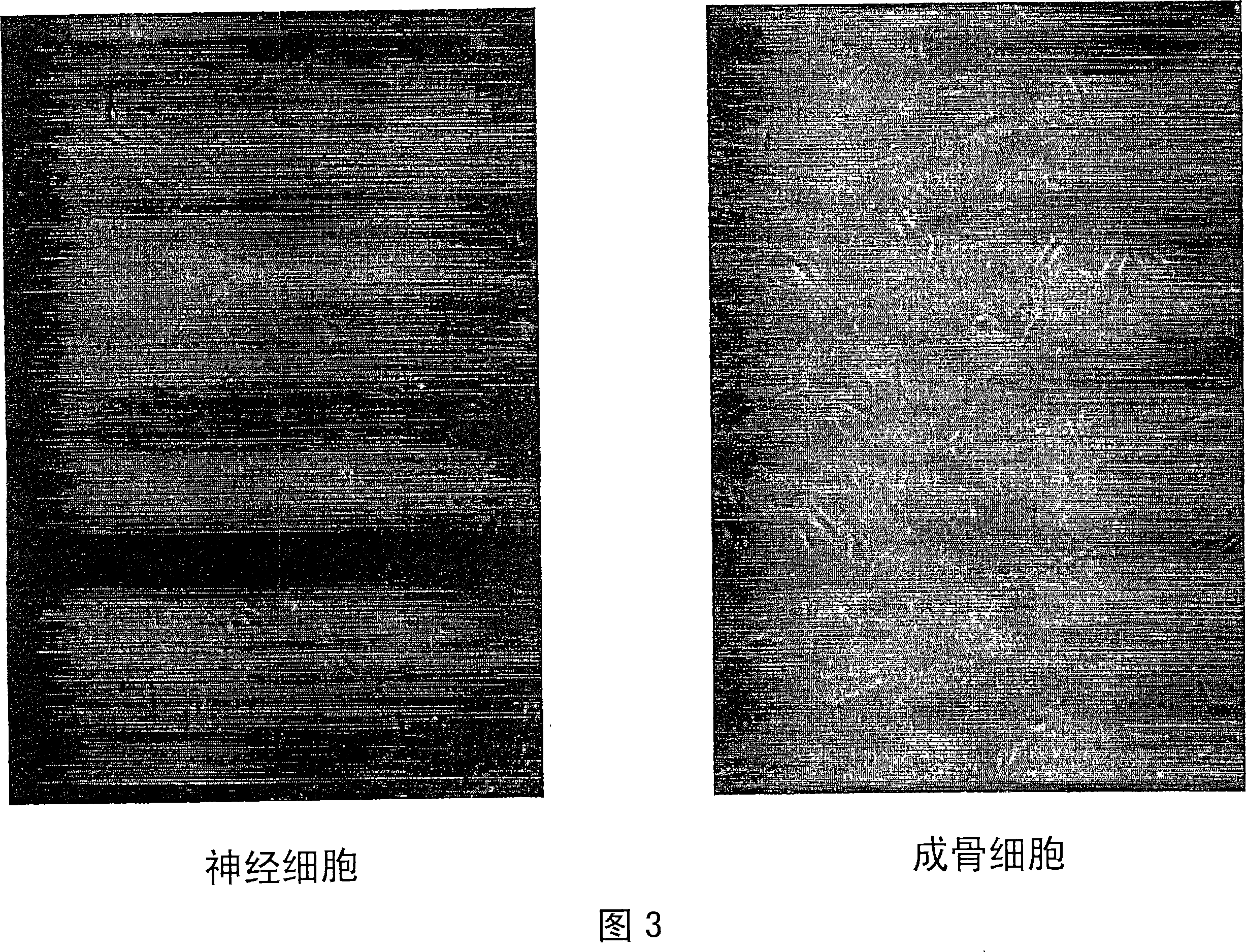Method of cell transdifferentiation
A cell differentiation, cell technology, applied in biochemical equipment and methods, animal cells, cell culture medium, etc.
- Summary
- Abstract
- Description
- Claims
- Application Information
AI Technical Summary
Problems solved by technology
Method used
Image
Examples
Embodiment
[0054] (1) Method
[0055] Mouse osteoblasts were cultured in αMEM medium (hereinafter, osteoblast medium) supplemented with FBS (final concentration 10%), 5-10 mM β-glycerophosphate, 50 μg / ml ascorbic acid, and 1×Glutamax Strains (MC3T3 / E1 ) were established until they became subconfluent.
[0056] After the cells cultured in the osteoblast medium were washed with DMEM medium, the culture condition of the cultured MC3T3 / E1 was changed from the culture using the osteoblast medium to the addition of FBS (final concentration 10%), 100ng αMEM medium (hereinafter, nerve cell culture medium) with bFGF at 10 ng / ml, FGF-8 at 10 ng / ml, EGF at 10 ng / ml, and BDNF at 10 nm / ml (hereinafter, nerve cell culture medium) was used to observe the morphology by microscopy and protein by immunostaining Expression analysis was used to detect changes in cells over time as a result of media changes.
[0057] (2) Results
[0058] After the MC3T3 / E1 cells cultured in the osteoblast medium were tran...
PUM
 Login to View More
Login to View More Abstract
Description
Claims
Application Information
 Login to View More
Login to View More - R&D
- Intellectual Property
- Life Sciences
- Materials
- Tech Scout
- Unparalleled Data Quality
- Higher Quality Content
- 60% Fewer Hallucinations
Browse by: Latest US Patents, China's latest patents, Technical Efficacy Thesaurus, Application Domain, Technology Topic, Popular Technical Reports.
© 2025 PatSnap. All rights reserved.Legal|Privacy policy|Modern Slavery Act Transparency Statement|Sitemap|About US| Contact US: help@patsnap.com



